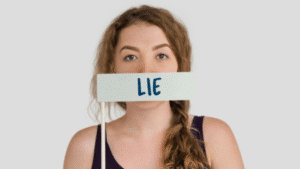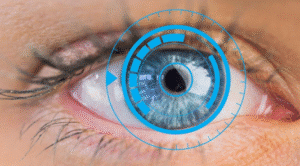On August 2, 1921, the small, quiet town of Colma in California was shocked when its parish priest – Father Patrick Heslin – went missing. This was the first time the priest’s whereabouts couldn’t be traced.
But since Colma was a low-crime town, locals had little to worry about. Especially as it emerged the good Father had responded to a house call for prayer.
However, Heslin’s disappearance took a drastic twist when a ransom note was sent out. With no further contact from the kidnappers, the priest was presumed dead.
A mega search party soon followed. Detectives and vigilante groups combed the length and breadth of Colma to uncover the priest’s body.
One particular individual – William A. Hightower – joined the search.
Hightower volunteered to show the police the deceased father’s remains. And as it turned out, he was dead-on accurate.
The police had their prime suspect.
Hightower was asked to take a polygraph exam, which he failed. The test findings later played an instrumental role in his conviction.
More importantly, this became the first time the modern polygraph machine was used in a criminal proceeding, and law enforcement has never been the same since.
Polygraphs in Law Enforcement

Law enforcement is arguably the biggest beneficiary of polygraph technology.
Many police departments across the United States administer lie detector tests during routine investigations to narrow down their suspect’ pools. Besides, federal security agencies like the Federal Bureau of Investigation (FBI) use polygraph exams to gather information about potential threats to national security.
To improve the outcome of detective work, a lie detector test is typically administered alongside other investigation techniques.
How Law Enforcement Officers Use Polygraphs In Criminal Investigations
Before administering a polygraph test, law enforcement officers must isolate a pool of suspects. Typically, the suspects undergo other routine investigations first. The idea is to shrink the pool even further before introducing lie detector tests.
Once the list is small enough, law enforcement officers request the remaining suspects to undergo a polygraph test. An accredited polygrapher is enlisted to conduct the exam. Most law enforcement departments maintain in-house examiners, although some may outsource these services from time to time.
Note that lie detector tests used for criminal investigation purposes are typically voluntary. A suspect can decline requests to be polygraphed without giving up their Fifth Amendment rights.
If a suspect agrees to be polygraphed, they should do so in writing. The consent must also be informed. That’s to say, the individual must fully understand the implications of submitting to a lie detector test.
An extensive pre-test interview is necessary to familiarize the suspect with the test environment, which is conducted on the same day.

Next comes the in-test phase. This is where much of the magic unfolds.
An examiner will pose a series of polygraph questions while recording each reply in real time. The questions fall into three categories;
1. Relevant Questions
Relevant questions address the matter under investigation directly. Examples include;
- Did you steal the (ITEM NAME)?
- Did you shoot (DECEASED’S NAME)?
2. Control Questions
Control questions bring up the suspect’s past offenses, which may be relevant to the case at hand. Examples include;
- Have you ever stolen from your previous employer?
- Have you ever thought of murdering your spouse?
3. Irrelevant Questions
True to the name, irrelevant questions are totally unrelated to the subject matter. They’re random questions designed to calm the suspect down after a grueling series of questions. Examples are:
- Is your name Tom?
- Are you originally from (HOMETOWN NAME)?
After the in-test questions, a polygrapher prepares the final report that highlights their professional verdict.
A non-deceptive inference is deduced when the pattern of response is greater for control than relevant questions, while the converse is true for deceptive verdicts. Some lie detector tests may be inconclusive. This happens when there’s an equal response pattern to control and relevant questions.
Finally, the examiner hands the report over to the detectives handling the case for further action. Depending on the jurisdiction, the findings may be allowed in judicial proceedings.

Other Uses of Polygraphs in Law Enforcement
1. Pre-employment Screening
Working as a law enforcement officer means access to state secrets. Unfortunately, unauthorized access to classified information can jeopardize national security.
Pre-employment polygraph screening helps hone in on candidates that can be trusted with high-level state secrets, sifting out those with questionable integrity.
2. Workplace Investigations
Law enforcement officers may be the guardians of law and order. But they’re far from being infallible.
Reports of police brutality, officers concealing seized narcotics shipments, and outright collusions with drug lords have been on the rise. Not to mention rampant claims of sexual harassment and gross insubordination.
When such incidents arise, the lead suspects may undergo specific-issue polygraphs to clear their names. Lie detector tests can help expedite the investigations, restoring public confidence in law enforcement agencies.

Narrowing the Suspects List With Polygraph Tests
Polygraph testing has undoubtedly revolutionized law enforcement, enabling detectives to hunker down on lead suspects.
Lie detector tests have helped solve multiple cases whose trails could have easily gone cold. While there are equally instances where seasoned criminals beat the polygraph, such incidents have become fewer due to advancements in polygraph technology.
However, polygraph reports should be used purely as secondary evidence. The findings cannot lead to a conclusive guilty or innocent verdict, in and of themselves.
Besides, there are certain ethical considerations to address when conducting a lie detector test. These include obtaining the examinee’s informed consent, adhering to relevant data privacy rules, and upholding the doctrine of innocence until proven otherwise.






